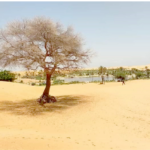Recently, High Chief Rashidi Ladoja was installed as a beaded crown-wearing monarch. The former governor who doubles as the Otun Olubadan of Ibadanland, accepted to wear the beaded crown in fulfilment of the requirements of the amended Chief’s law.
The surprising turn of events generated debates among sociopolitical circles within and outside the state because of Ladoja’s earlier stance against the crown, which he had on different occasions referred to as ‘ade paali’ meaning; ‘the cardboard crown’.
According to its advocates, the beaded crown for members of the Olubadan-in-council is a ceremonial one which honours the high chiefs who become addressed as Obas (Kings) under the imperial majesty of the Olubadan, yet retain their constitutional and customary duties of member of the Olubadan-in-council. By implication, every Olubadan, after the late Oba Lekan Balogun, is already an Oba before assuming the Olubadan throne.
Ladoja, who had hitherto opposed the idea, described it as an unnecessary innovation introduced to the chieftaincy system in Ibadanland, hence he refused the crown and insisted on wearing only the Olubadan crown. This brought him in conflict with the Seyi Makinde-led administration and led to confrontations with other members of the Olubadan-in-council, who threatened not to nominate him whenever his turn came.
Signed into law in May 2023, the amendment to Cap. 28 of the state’s Chiefs Law, granted the state governor an autonomy to present beaded crowns and coronets to chiefs in the state. The amendment was welcomed with both knocks and from different quarters in the state.
According to Ladoja, the current Olubadan-Designate, the chief’s law was first formulated in 1946, when Ibadan began the formal documentation of how the chieftaincy process would be. It was reviewed in 1950, 1959, 1974, 1981, 1993 and 2000.
In August 2017, Ibadan which used to have the Olubadan as the only beaded-crown wearing king, crowned 21 chiefs following the adoption of the recommendations of a judicial commission of inquiry earlier inaugurated by late Governor Abiola Ajimobi.
The move met with staunch criticism, prominent among which was the late Olubadan Oba Saliu Adetunji, Seyi Makinde, Ladoja, who instituted a court proceeding against it, amongst others.
After almost two years of back and forth, an Oyo State High Court pronounced that the parties in the suit had met and agreed that they would let go the right to wear beaded crown and coronet granted by the state government during the period the suit lasted. That decision revoked the Ajimobi order.
Subsequent upon Makinde’s re-election as Oyo State governor in 2023, history was again repeated as he approved the promotion of 11 Ibadan High Chiefs to beaded crown Obas. This followed the signing of the Chieftaincy Amendment Bill into law after its passage by the state House of Assembly.
Amongst the elevated High Chiefs are the present Olubadan of Ibadanland, Oba Owolabi Olakulehin (then, Balogun Olubadan), Balogun, Tajudeen Ajibola; Osi Olubadan, Eddy Oyewole; Osi Balogun, Lateef Adebimpe; Ashipa Olubadan, Biodun Kola-Daisi; and others.
Ladoja repelled the offer and approached the court once again. He was, however, prevailed upon to withdraw his case to allow a seamless transition when Balogun and Olakulehin were to be installed. Following opposition within and outside the Olubadan-in-council, the state government eventually released a gazette documenting the amended chief’s law during the coronation ceremony of Oba Olakulehin. The gazette summarily stated that only crowned chiefs were eligible to become the Olubadan henceforth. While Ladoja’s supporters claimed that the amendment was aimed at witch-hunting the former governor, who had refused to accept the crown and was next in line to the throne, the government side claimed as baseless and warmongering such insinuations.
Following Ladoja’s speech of acceptance, sources said it was after series of meeting involving him, Governor Makinde, Prelate Ola Makinde, Chief Bode Amao, president of the Central Council of Ibadan Indigenes, CCII, and other notable Ibadan indigenes.
Sources also said that there were influences from the family of the new Olubadan.
Another palace source said, “If High Chief Ladoja failed to accept the crown, it may have consumed him, God forbid. In the Olubadan succession line, Ladoja is next in line, but some sought to undermine him using the beaded crown. Thank God he agreed to accept it.”
Speaking with journalists at his private residence in Ondo Street in Ibadan, Ladoja attributed his decision to accept the crown to the overwhelming influence of both the indigenes and non-indigenes of the land, but with a caveat that the acceptance of the crown did not make him an Oba.
Ladoja added, “Another ‘kata-kata’ started during the enthronement of Oba Owolabi Olakulehin as the 43rd Olubadan of Ibadanland when a section of the gazette chieftaincy reforms was inserted in the programme of the event. I did not have a copy of the programme but was told about the insertion of a particular page of the gazette.
“Though people believe that it is because of Ladoja, my interpretation is different. I said the government of Makinde wanted me to become the Olubadan. It was only telling the whole public that this was the hindrance that could prevent this man from ascending the throne.
“As predicted, a lot of people objected. Ladoja must not accept it. Ladoja must become Olubadan. Since over 98 per cent of the people of Ibadanland want Ladoja to become the Olubadan, I had no option but to have a re-think and start consultations.”

 Join Daily Trust WhatsApp Community For Quick Access To News and Happenings Around You.
Join Daily Trust WhatsApp Community For Quick Access To News and Happenings Around You.


